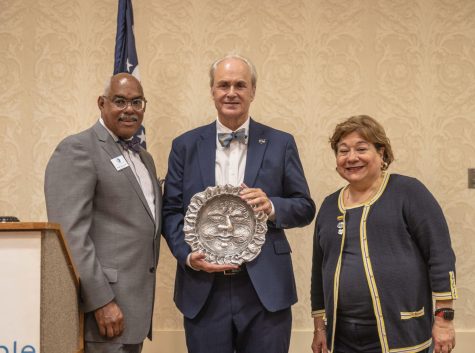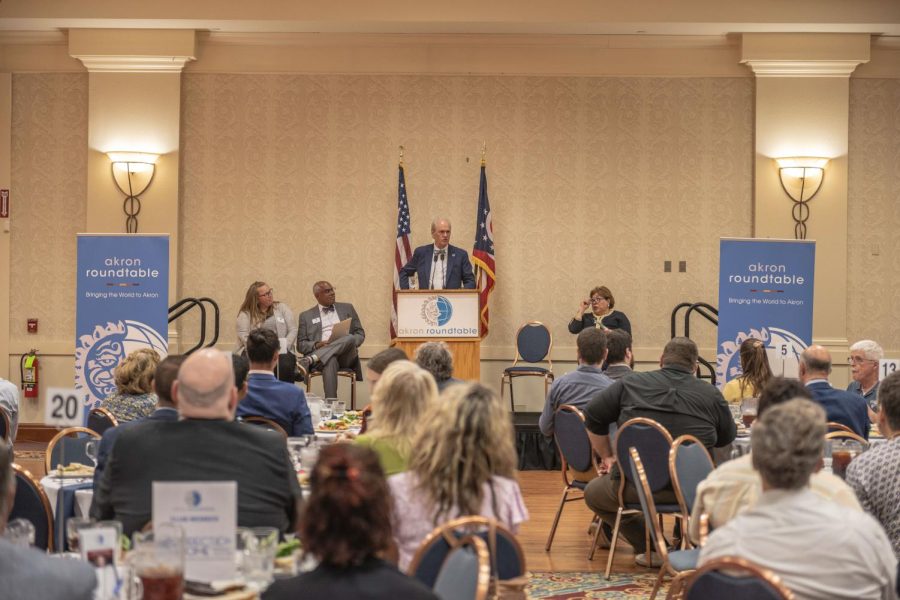President Diacon addresses academic accessibility at Akron Roundtable luncheon
Kent State University President Todd Diacon speaking at Quaker State Catering Center for the Akron Roundtable luncheon on June 16, 2022. Diacon told listeners about the third wave economic change in education funding and access.
June 16, 2022
The cost of college has not increased since 1960, but the responsibility of who pays for it has. The shift in access and affordability of higher education was President Todd Diacon’s topic when he spoke at the monthly Akron Roundtable luncheon on June 16.
The cost of education shifted from the taxpayer, through Pell Grants, directly onto students and their families.
“Financial aid has changed since I tried going to school with a Pell Grant,” said Garry Dirden, an Akron Roundtable regular. “Creating an affordable way for higher education to be accessed by all is one of the most important things facing this generation.”
A Pell Grant used to cover 80 percent of education costs when it was first created, and now barely covers 33 percent.
“State governments heavily subsidized the earning of my degree and the degrees of my peers. Today tuition payers bear that cost instead,” Diacon said. “Kent State’s tradition is academic affordability and we want to continue that.”
Along with Kent State’s “Flashes Go Further Scholarship,” Diacon said the solution to affordable and accessible education is an increase in Pell Grants to bridge the gap of academic costs, but not without balancing accountability of completion with that increase.

“Today the cost of failure to earn a degree rests on the consumer. Student debt has grown at the same rate of the decline of state subsidizing” Diacon said. “But eliminating student debt needs to be income-based, not one size fits all.”
Diacon explained the third wave of academic access and the shift of value from enrollment of college prospects to the completion of a post-secondary education program.
“The issue we face today is no longer just enrollment, that’s not even half the battle,” Diacon said. “Academic completion is our goal.”
Kent State has a graduation rate of 67.5 percent and has received six awards for maintaining academic excellence.
Graduate school borrowing is over 52 percent of the total student debt and 34 percent of student debt is held by 7 percent of borrowers, Diacon said. That 7 percent is composed of doctors, lawyers and dentists who view this large loan as an investment in their future earnings and have proven ability to pay it off, he said. Not completing a collegiate program creates lasting student debt that is not easily paid off.
“Taking on student debt is both a challenge and an opportunity but taking it on and not graduating, is an institutional failure,” Diacon said.
When asked “what keeps you up at night?” Diacon answered “[t]he demographic decline paired with the challenges of access.”
Berkeley Chadwick is a reporter. Contact him at [email protected].












